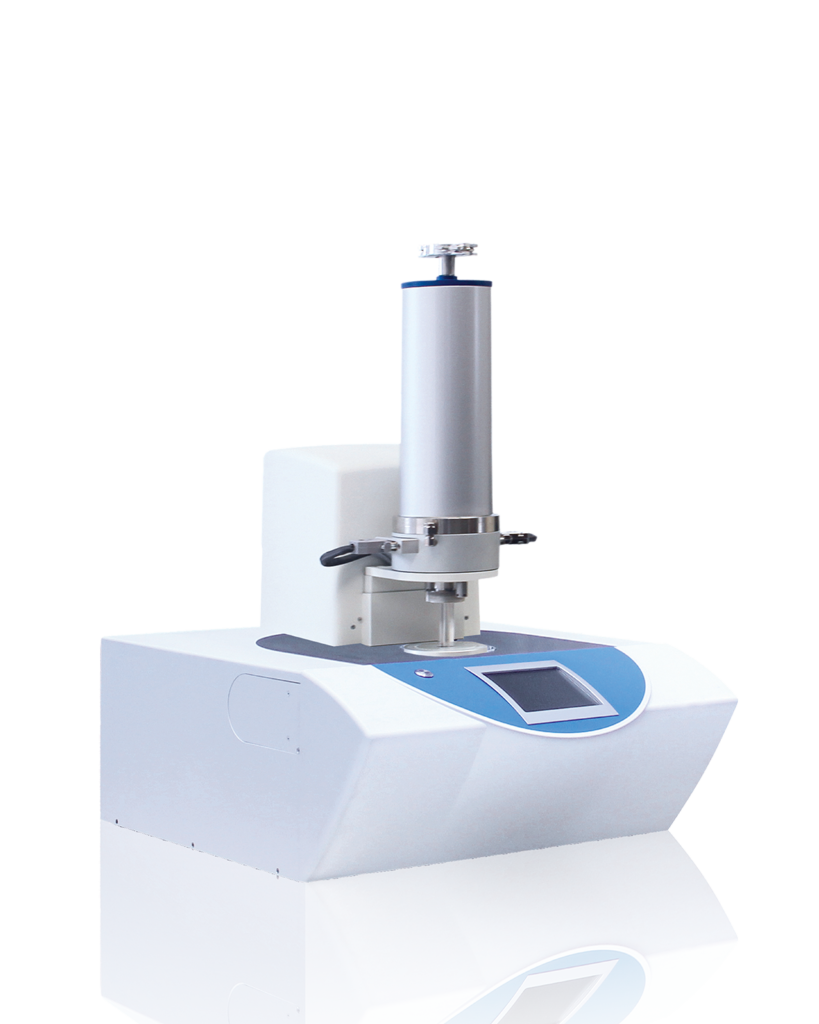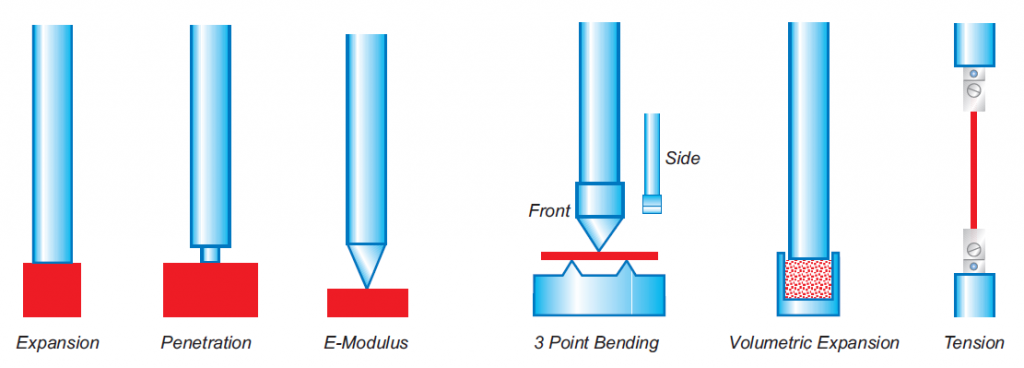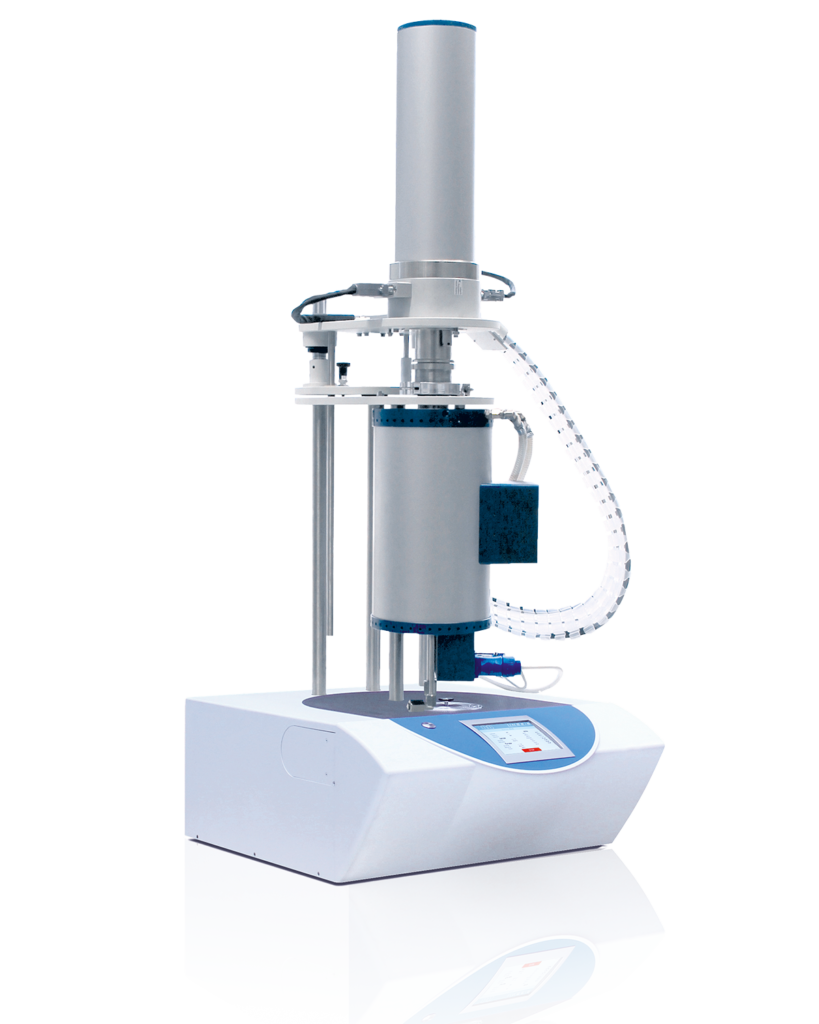
TMA - Thermo-
mechanical Analysis
Thermal expansion with neglectible load
Change in sample geometry over temperature with additional sample load
Our TMA measuring devices
With the thermomechanical analysis (TMA) the change in sample geometry is measured with additional sample loading via the temperature.
Static tests include: Expansion, penetration, tensile and compression tests as well as 3-point bending.
By applying an oscillating force to the sample, the dynamic mechanical analysis (dynamic TMA) records its frequency and temperature dependence as well as the viscoelastic properties and thus determines the modulus of elasticity and the damping values.
All TMA devices operate in accordance with the following national and international standards (DIN 51 005, ASTM D 3386, ASTM E 831, ASTM D 696, ISO 11359 – Part 1 to 3).

The concept
Both the temperature and the atmosphere can be controlled separately.
An optional mass flow controller for regulating a purge gas is also available.
The vacuum-tight cell enables measurement under defined atmospheres.
This means that samples that are sensitive to oxidation can also be measured perfectly.
Furnace: A range of robust and reliable ovens is available for the TMA Platinum series.
The individual design enables extremely fast heat-up and cool-down times, as well as excellent temperature control over the entire measuring range.
Cryo Option for Temperatures down to 10 K
With the “Cryo-Option”, temperatures of less than 10 K are now possible!
This results in a potential measuring range of approx. -263°C to +220°C, which means that even the greatest challenges of low temperature measurements are no longer a problem.
Measuring sensors: Every dimensional change in the sample is transmitted to a high-precision inductive transducer (LVDT sensor) via a push rod.
Its very precise and reliable signal guarantees the best possible reproducibility over the entire temperature range.
The temperature sensor is located directly next to the sample, which results in extremely high accuracy.
In dynamic TMA (DTMA), a known, sinusoidal voltage and temperature are applied to the sample with a linear ramp and the resulting sinusoidal voltage is measured.
This allows the visco-elastic behavior of the sample to be investigated.
The force exerted on the probe changes automatically with the specified frequency.
All TMA devices operate in accordance with the following national and international standards: (DIN 51 005, ASTM D 3386, ASTM E 831, ASTM D 696, ISO 11359 – Parts 1 to 3).

Are you interested in a TMA measuring device?
Would you like to carry out a
sample measurement?
Contact us today!

Sebastian
Phone: +1 (609) 223 2070
+49 (0) 9287/880 0
[email protected]
Quicklinks
Reach your goal quickly
Well informed
Downloads
Everything at a glance
Contact form
How new materials have been steadily improving our quality of life
for centuries.
Use the quotation form to send us a specific request for a quotation.





